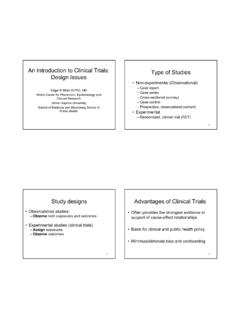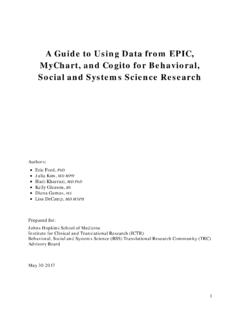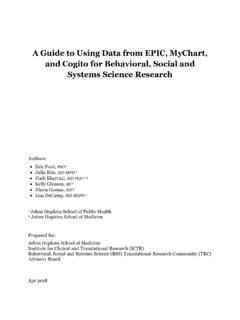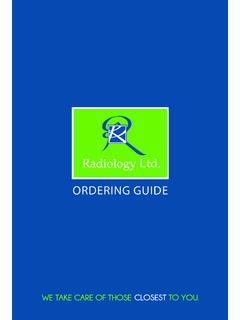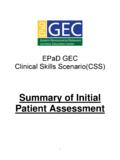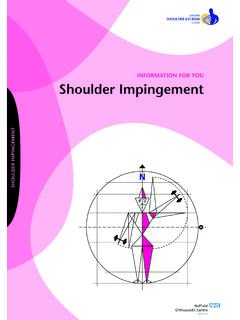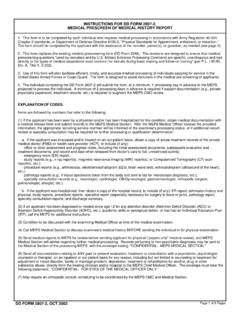Transcription of Skills: Radial Pulse
1 LoginHomeSkillsView SkillsPatient EducationPrintBack to Search ResultsRelated InformationSkillsApical PulseAssessment: RespirationsBlood Pressure: Upper ExtremityBlood Pressure: Lower ExtremityBlood Pressure (Systolic): PalpationReferencesRelated Book ChapterDue to ongoing updates to Clinical Skills, the content in the book chapter (PDF) may differ from the PulseQuick SheetExtended TextSuppliesDemosIllustrationsTe stTe st R esultsCheckListALERTS kills: Radial of 109/12/2017, 12:40 PMAnxiety can raise the Pulse rate. If the patient s Pulse rate is higher than expected, reassess it at the end ofthe physical assessment when the patient is more hand hygiene before patient Verify the correct patient using two Assess the patient for risk factors for an abnormal Radial Assess the patient for signs and symptoms of altered cardiac Determine the patient s previous baseline Pulse rate from the patient s Encourage the patient to relax as much as If the patient has been active and his or her condition permits, wait several minutes before assessing Perform hand Help the patient assume a supine or sitting If the patient is supine.
2 Place his or her forearm straight alongside the body or across the lower chest orupper abdomen with the wrist extended straight (Figure 2). If the patient is sitting, bend the elbow 90degrees and support the lower arm on a chair or the nurse s Place the tips of the first two or three fingers over the groove along the Radial (or thumb) side of thepatient s inner wrist (Figure 2). Slightly extend or flex the patient s wrist with the palm down until the pulseis Lightly compress the artery against the radius, obliterating the Pulse initially. Then ease the pressure so thepulse becomes easily Determine the strength of the Pulse ( , 0, 1+, 2+, 3+, 4+). Note whether the thrust of the vessel againstthe fingertips is absent, thready, weak, strong, or bounding (Box 1).
3 If this is a repeat assessment , note anychanges in the intensity of the Pulse . Use this subjective scale as accurately as possible, especially if thepresence or absence of pulses is a concern. Consider having another nurse assess the patient at thesame After palpating a regular Pulse , note the position of the second hand on a wristwatch and then begin tocount the rate. Begin counting with the first beat felt after the second hand has moved toward the nextnumber on the dial; count as one, then two, and so If the Pulse is regular, count the rate for 30 seconds and multiply the total by If the Pulse is irregular, count the rate for a full 60 seconds. Assess the pattern of Compare the Radial pulses bilaterally.
4 If a marked difference between the sides exists, assess the extremitiesfor perfusion. Notify the practitioner if signs of decreased perfusion, including a change in skin color,edema, a change in skin temperature, and decreased Pulse palpability, are Help the patient to a comfortable Discuss the findings with the patient as Assess, treat, and reassess Perform hand Document the procedure in the patient s Ada Adapted from Perry, , Potter, , Ostendorf, (Eds.). (2018). Clinical nursing skills & techniques(9th ed.). St. Louis: Review: Donna Grochow, MSN, RNC-NIC, WCC, February 2017 ALERTA nxiety can raise the Pulse rate. If the patient s Pulse rate is higher than expected, reassess it at the end ofthe physical assessment when the patient is more : Radial of 109/12/2017, 12:40 PMOVERVIEWThe Pulse is the palpable throbbing of blood flow.
5 Because of the force of the blood exiting the heart, aorticdistention creates a Pulse wave that travels rapidly toward the extremities. When the Pulse wave reaches aperipheral artery, the nurse can feel it by lightly palpating the artery against underlying bone or muscle. Thenumber of pulsing sensations occurring during 1 minute is the Pulse rate per the patient s peripheral Pulse sites offers valuable data for determining the integrity of thecardiovascular system. An abnormally slow, rapid, or irregular Pulse may indicate the cardiovascular system sinability to deliver adequate blood to the Pulse can be assessed using any major artery (Tab le 1), but the Radial artery is the most commonly used(Figure 1).
6 During cardiovascular collapse, the Radial Pulse may not be palpable because of decreased bloodpressure and decreased perfusion to the distal arteries. In cases of suspected cardiovascular collapse, a morecentral site ( , carotid artery) should be used for Pulse evaluation. A central Pulse will be the last Pulse presentduring cardiac here for a list of AND FAMILY EDUCATIONE xplain the equipment and the procedure to the patient and a patient who takes prescribed cardiotonic or antiarrhythmic medications to assess the Radial Pulse todetect adverse a patient starting a prescribed exercise regimen how to monitor the Radial Pulse to determine his orher response to questions and answer them as they AND PREPARATIONA ssessmentPerform hand hygiene before patient Verify the correct patient using two Assess the patient for risk factors for an abnormal Radial Invasive cardiovascular diagnostic testsa.
7 Surgery of an extremityb. Peripheral vascular diseasec. Assess the patient for signs and symptoms of altered cardiac Dyspneaa. Fatigueb. Chest painc. Orthopnead. Syncopee. Palpitationsf. Dependent edemag. Skills: Radial of 109/12/2017, 12:40 PMCyanosis or pallorh. Determine the patient s previous baseline Pulse rate from the patient s PreparationEncourage the patient to relax as much as If the patient has been active and his or her condition permits, wait several minutes before assessing PROCEDUREP erform hand Verify the correct patient using two Help the patient assume a supine or sitting If the patient is supine, place his or her forearm straight alongside the body or across the lower chest orupper abdomen with the wrist extended straight (Figure 2).
8 If the patient is sitting, bend the elbow 90degrees and support the lower arm on a chair or the nurse s Place the tips of the first two or three fingers over the groove along the Radial (or thumb) side of thepatient s inner wrist (Figure 2). Slightly extend or flex the patient s wrist with the palm down until the pulseis Rationale: The relaxed position of the lower arm and the extension of the wrist permit fullexposure of the artery to compress the artery against the radius, obliterating the Pulse initially. Then ease the pressure so thepulse becomes easily Rationale: Pulse assessment is more accurate when using moderate pressure. Too muchpressure occludes the Pulse , impairs blood flow, and may result in the nurse counting his or herown Pulse the strength of the Pulse ( , 0, 1+, 2+, 3+, 4+).
9 Note whether the thrust of the vessel againstthe fingertips is absent, thready, weak, strong, or bounding (Box 1). If this is a repeat assessment , note anychanges in the intensity of the Rationale: Strength reflects the volume of blood ejected against the arterial wall with eachheart contraction. An accurate description of strength improves communication among nursesand other health care this subjective scale as accurately as possible, especially if the presence or absence ofpulses is a concern. Consider having another nurse assess the patient at the same palpating a regular Pulse , note the position of the second hand on a wristwatch and then begin tocount the rate. Begin counting with the first beat felt after the second hand has moved toward the nextnumber on the dial; count as one, then two, and so Rationale: The rate is determined accurately only after palpating the Pulse .
10 Timing begins withzero. The count of one is the first beat palpated after timing the Pulse is regular, count the rate for 30 seconds and multiply the total by Skills: Radial of 109/12/2017, 12:40 PMIf the Pulse is irregular, count the rate for a full 60 seconds. Assess the pattern of Rationale: Inefficient contraction of the heart fails to transmit a Pulse wave, resulting in anirregular Pulse . A full minute assessment helps ensure an accurate estimate of beats per minute(bpm).Compare the Radial pulses bilaterally. If a marked difference between the sides exists, assess the extremitiesfor perfusion. Notify the practitioner if signs of decreased perfusion, including a change in skin color,edema, a change in skin temperature, and decreased Pulse palpability, are Help the patient to a comfortable Discuss the findings with the patient as Perform hand Document the procedure in the patient s MONITORING AND CAREIf assessing a patient s Pulse for the first time, establish the Radial Pulse as baseline if it is within theacceptable Compare the Pulse rate and character with the patient s previous baseline and the acceptable range for thepatient s Assess, treat.
